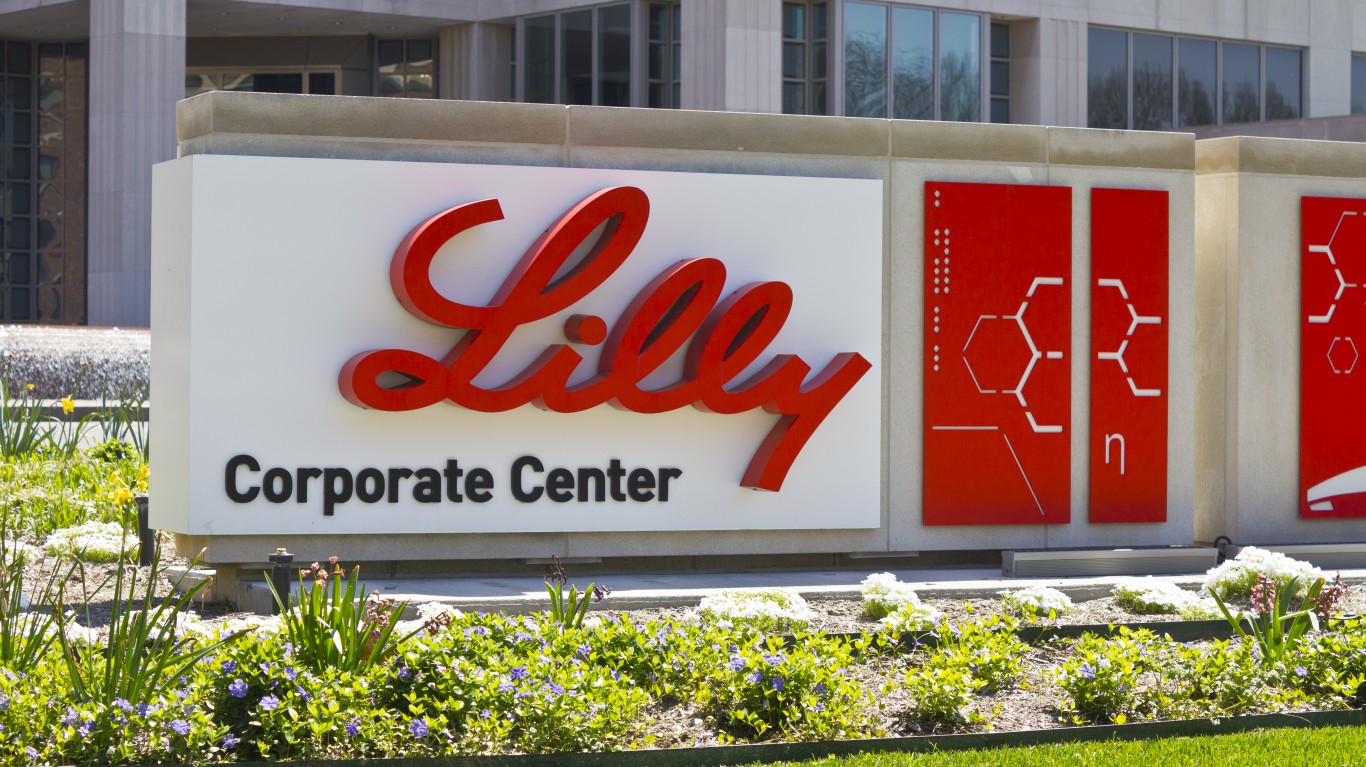
Pharma stocks have been on quite a nice run over the past year. A number of new catalysts have revitalized this sector, which I’m going to dive into with a few of these picks. Whether we’re talking about innovative new drugs aimed at weight loss and other cancers or ailments, or simply greater operating efficiency and returns on capital, there are reasons why many investors continue to scour this sector for growth.
It hasn’t always been like this. In fact, many top big pharma names have struggled to provide meaningful growth over the past decade. Outside of certain Covid vaccine catalysts, and some mergers and acquisitions activity in the space, it’s been relatively slow going for longer-term investors. However, the tide does appear to be changing, and these three stocks do look well-positioned to continue to capitalize on certain growth catalysts in this sector.
Without further ado, here are three top pharma stocks I think represent buying opportunities in September.
Key Points About This Article:
- Growth catalysts are beginning to emerge for a number of top pharma players, a welcome reality for many investors in this sector.
- Here are three of the top pharma plays for September 2024 I think are worth considering here.
- If you’re looking for some stocks with huge potential, make sure to grab a free copy of our brand-new “The Next NVIDIA” report. It features a software stock we’re confident has 10X potential.
Eli Lilly (LLY)

Eli Lilly (NYSE:LLY) has certainly been among the big winners over the past five years in the pharma space. The company’s stock price has surged 770% over this time frame, reaching all-time highs in 2024 due to the success of its diabetes and weight loss drugs, Mounjaro and Zepbound. Despite its massive $850 billion market cap and a high price-to-earnings ratio of 110-times, on a forward-looking basis, this stock does appear to be reasonably priced, given the growth catalysts at hand. On a forward basis, the company’s price-earnings multiple comes down to a more manageable 36-times.
I do think the company’s forward expected revenue growth profile is what makes the stock worth considering. On a forward price-earnings-to-growth (PEG) basis, LLY stock trades at a multiple of 0.85. That means its earnings are expected to grow faster than its multiple, meaning this stock will look much cheaper on a 2026 or 2027 basis.
I also think there’s room to forecast this stock out a couple or three years, due to the company’s recently-launched discounted Zepbound® single-dose vials. This launch is expected to expand access for self-pay patients amid high demand. The new vials offer a 50%+ price cut compared to other GLP-1 obesity drugs, providing more affordable options for those without insurance or savings cards.
For those bullish on the long-term impacts of the weight loss trends we’re seeing translate into the company’s earnings, this is a stock that’s worth considering at current levels for long-term growth.
Regeneron Pharmaceuticals (REGN)

Regeneron Pharmaceuticals (NASDAQ:REGN) develops and sells treatments for inflammation, cancer, cardiovascular, and eye diseases. The company’s key drugs include Praluent for cholesterol, Dupixent for immunology, Libtayo for cancer, and Eylea for eye conditions. Collaborating with Sanofi and others to advance monoclonal antibodies, RNA interference, and CRISPR-based gene editing technologies, this is a stock that’s on the cutting edge of developing some of the most important potential drugs moving forward. That’s likely one of the reasons why this stock is up more than 300% over the past year.
Of course, having a strong pipeline is one thing, but seeing strong performance from existing drugs is equally important. The company’s share price has seen strong price action following its better-than-expected Q2 earnings, with Regeneron touting strong eczema and eye treatment sales as key drivers of its 12.3% revenue growth figure. The company’s R&D spending grew 10.5% (less than its overall revenue growth rate), with key investments made in Regeneron’s obesity drugs and other antibody treatments.
With a recently-announced $3 billion share buyback program and a strong buy consensus rating from analysts, I think this stock has further to run from here.
Vertex Pharmaceuticals (VRTX)

Vertex Pharmaceuticals (NASDAQ:VRTX) is known for its diverse biotech portfolio, including gene-editing, non-opioid painkillers, and potential treatments for kidney disease and type 1 diabetes. The company’s cystic fibrosis (CF) franchise, surpassing the impact of its once-prominent hepatitis C drug Incivek, could cover 90% of the CF population if its drugs gain global and pediatric approvals. With strong patents and minimal competition, Vertex is set to maintain its CF market dominance while exploring other rare disease treatments to boost revenue.
The company’s recently-reported Q2 2024 revenue of $2.65 billion reflected 6% year-over-year growth, and highlights the strength of the company’s core pipeline. While Vertex remains heavily dependent on its cystic fibrosis treatments, and there’s uncertainty over whether certain drugs in its pipeline will be approved, this stock is perhaps a higher upside pick than the first two due to its size.
With a comparatively small market capitalization of $112 billion, and a five-year stock price gain of 175% (still extremely solid, but nowhere close to the previous two picks on this list), one could argue that Vertex has the highest upside potential of the three. I think the company’s strong long-term growth profile driven by a 15% average annual return since its IPO in 1991 should entice many investors to consider this stock on dips moving forward.
Are You Ahead, or Behind on Retirement? (sponsor)
If you’re one of the over 4 Million Americans set to retire this year, you may want to pay attention.
Finding a financial advisor who puts your interest first can be the difference between a rich retirement and barely getting by, and today it’s easier than ever. SmartAsset’s free tool matches you with up to three fiduciary financial advisors that serve your area in minutes. Each advisor has been carefully vetted, and must act in your best interests. Start your search now.
Don’t waste another minute; get started right here and help your retirement dreams become a retirement reality.
Thank you for reading! Have some feedback for us?
Contact the 24/7 Wall St. editorial team.





